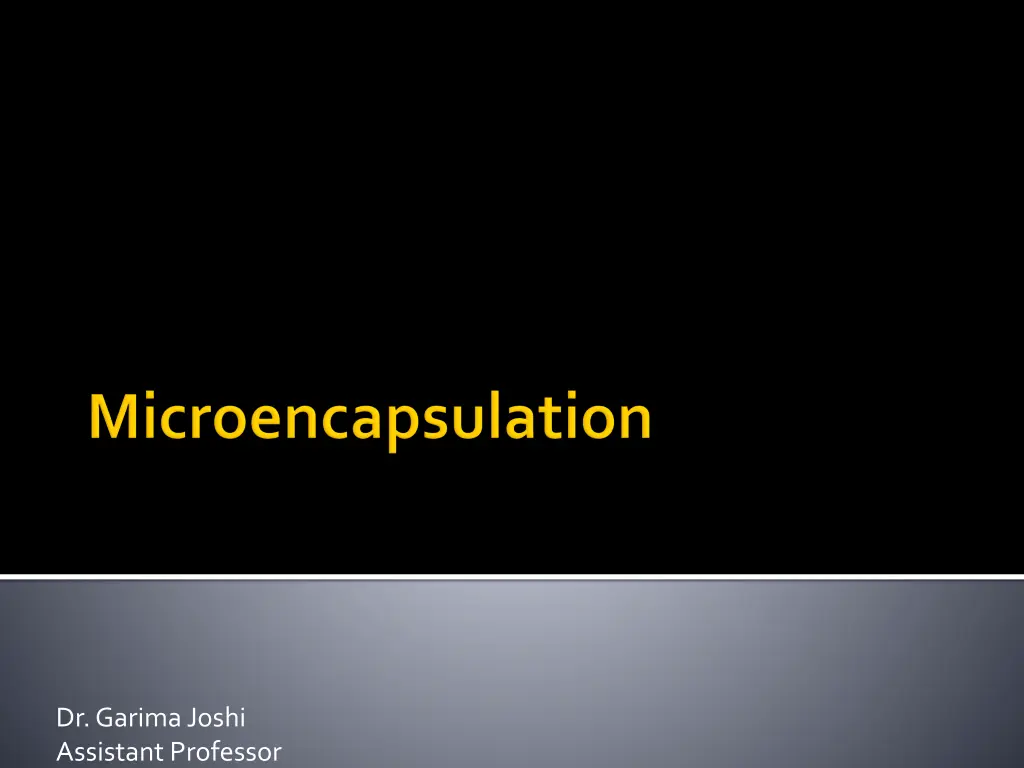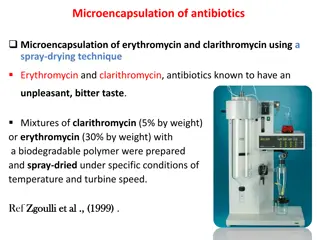
Understanding Microencapsulation Techniques in Manufacturing Microcapsules
Explore the process of microencapsulation, where tiny droplets or particles are coated with a polymeric film to create microcapsules. Learn about the components, core and coating materials, and the reasons for using encapsulation techniques. Discover the applications and benefits of microencapsulation in various industries.
Download Presentation

Please find below an Image/Link to download the presentation.
The content on the website is provided AS IS for your information and personal use only. It may not be sold, licensed, or shared on other websites without obtaining consent from the author. If you encounter any issues during the download, it is possible that the publisher has removed the file from their server.
You are allowed to download the files provided on this website for personal or commercial use, subject to the condition that they are used lawfully. All files are the property of their respective owners.
The content on the website is provided AS IS for your information and personal use only. It may not be sold, licensed, or shared on other websites without obtaining consent from the author.
E N D
Presentation Transcript
Dr. GarimaJoshi Assistant Professor
Introduction Fundamental Consideration Reason for Encapsulation Techniques of Manufacturing Microcapsule Applications
MICROENCAPSULATION is a process by which very tiny droplets or particles of liquid or solid material are surrounded or coated with a continuous film of polymeric material. The product obtained by this process is called as Microcapsules
Generally Micro particles consist of two components a) Core material. b) Coat or wall or shell material
The material to be coated. It may be liquid or solid or gas. Liquid core may be dissolved or dispersed material. Composition of core material: Drug or active constituent Additive like diluents Stabilizers
Inert substance which coats on core with desired thickness. Composition of coating: Inert polymer Plasticizer Coloring agent Resins, waxes and lipids Release rate enhancers or retardants
Water soluble resins-Gelatin, Gum Arabic, Starch, PVP, CMC, . .MC, Arabinogalactan, Polyvinyl alcohol. 2. Water insoluble resins-EC, Polyethylene, Polymethacrylate, .. Polyamide (Nylon), Cellulose nitrate, Silicones. 3. Waxes and lipids- Paraffin, Carnauba, Beeswax, Stearicacid, . .. Stearylalcohol, Glycerylstearates. 4. Enteric resins-Shellac, Cellulose acetate phthalate, Zein.
The core must be isolated from its surroundings, as 1. To protect reactive substances from the environment, 2. To convert liquid active components into a dry solid system, 3. To separate incompatible components for functional reasons, 4. To protect the immediate environment of the microcapsules from the active components.
To control the rate at which it leaves the microcapsule, as 1. To control release of the active components for delayed (timed) .release or long-acting (sustained) release, 2. The problem may be as simple as masking the taste or odor of .the core, 3. To Increase of bioavailability, 4. To produce a targeted drug delivery, 5. Protects the GIT from irritant effects of the drug, 6. Extension of duration of activity for an equal level of active .agent.








